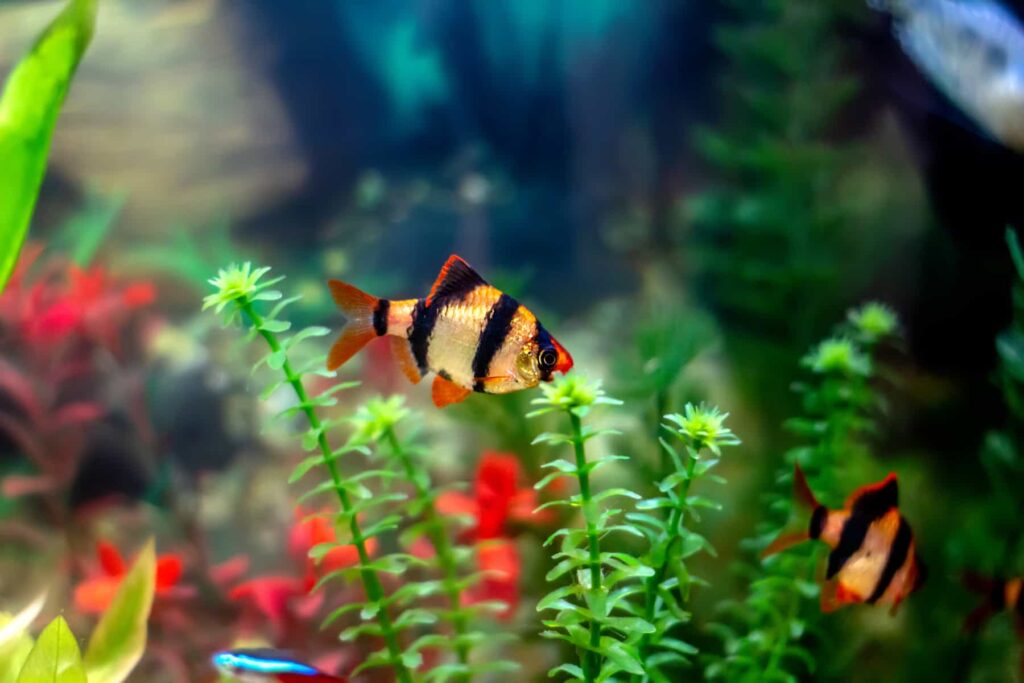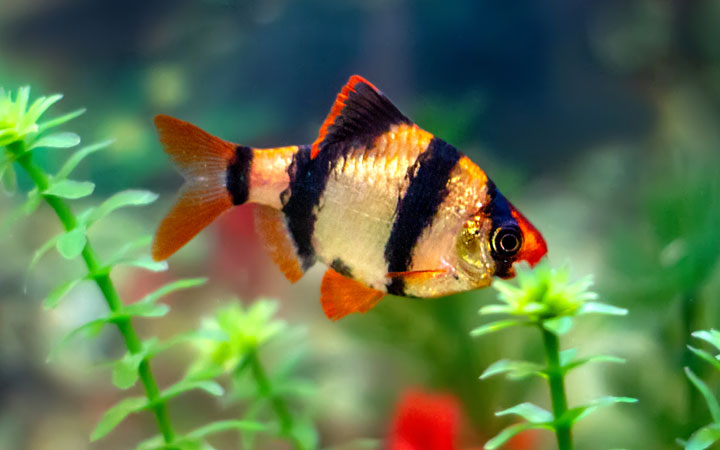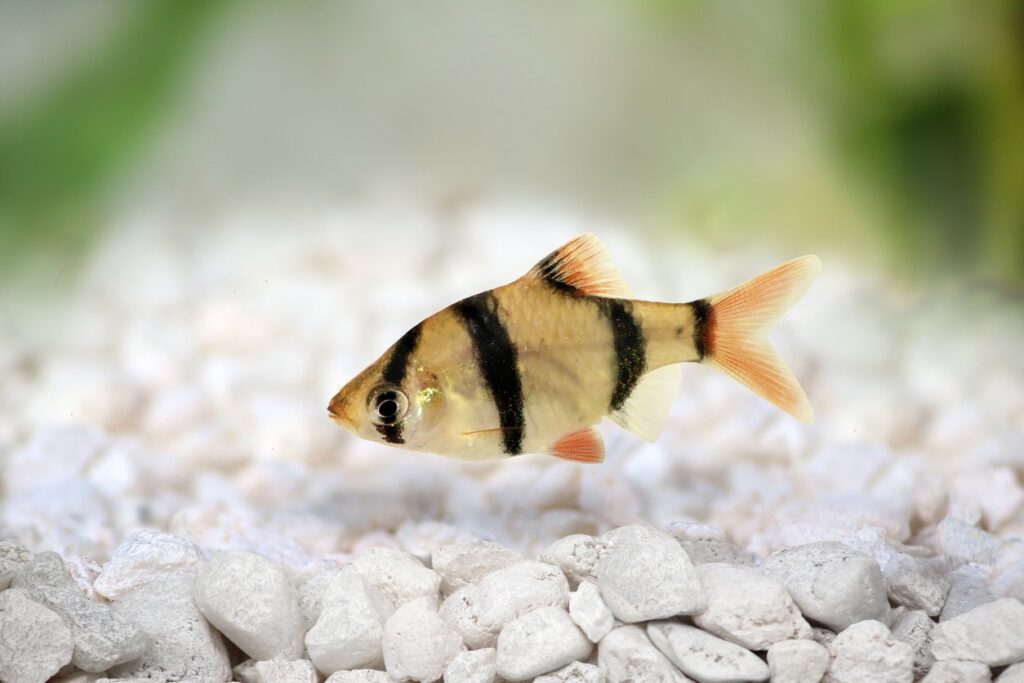The tiger barb (Puntigrus tetrazona) is a popular and hardy freshwater fish that is native to Southeast Asia. They are known for their bright colors and playful behavior, making them a favorite among aquarium enthusiasts.
Tiger barbs have a distinctive appearance, with black stripes that run vertically along their body and bright orange or red fins. They are relatively small, growing to only about 2.5 inches in length, making them a good choice for smaller aquariums.
Tiger barbs are active and social fish, and should be kept in groups of 6 or more individuals to prevent stress and aggression. They can be kept with other peaceful fish species, but should not be kept with slow-moving or long-finned fish, as they may nip at their fins.
When it comes to water parameters, tiger barbs prefer slightly acidic to neutral water with a pH of 6.0-7.5 and a temperature range of 75-82°F. They are tolerant of a wide range of water conditions, but it is important to maintain good water quality and provide a good filtration system to keep them healthy.
Tiger barbs are omnivores and will eat a variety of foods, including flakes, pellets, and live or frozen foods such as brine shrimp or bloodworms. They should be fed twice a day, with only as much food as they can consume in a few minutes. Overfeeding can lead to health problems and water quality issues.
Breeding tiger barbs can be challenging, as they require specific water conditions and a well-established aquarium. They are egg scatterers and will lay their eggs on plants or other surfaces in the aquarium. The eggs will hatch in about 24-36 hours and the fry can be fed on small, live foods such as infusoria or newly hatched brine shrimp.
Tiger barbs are also known for their playful and sometimes aggressive behavior. They may nip at the fins of other fish, or even their own kind, if they feel threatened or stressed. Providing plenty of hiding places and plants in the aquarium can help reduce aggression.
In conclusion, the tiger barb is a popular and colorful species that can add vibrancy and activity to any aquarium. With proper care and attention, they can live for up to 5 years in captivity. If you are interested in adding tiger barbs to your aquarium, be sure to provide them with a suitable environment, a varied and balanced diet, and compatible tank mates.





![]()
